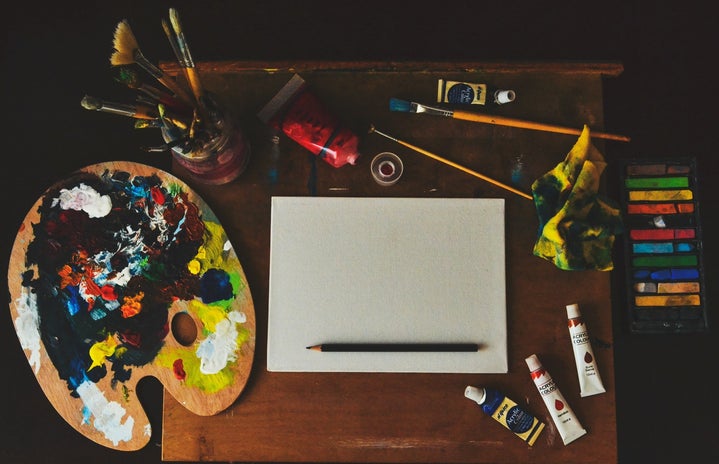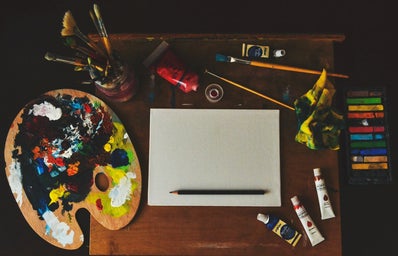For years, across various mediums, artistic techniques have been commonly culturally appropriated by typically White or Western artists to the point where it is incredibly difficult to pinpoint the origins of these works. It is time to move toward cultural collaboration and away from cultural copying to truly appreciate the original and creative involvement that these communities bring to the table.
Stealing Like an Artist
The concept of “stealing like an artist” has become ingrained into the art world for years, and was particularly perpetrated by none other than the famous Pablo Picasso who is known for his quote, “good artists borrow, great artists steal”. Picasso has created numerous popular works, many of which steal from cultural motifs of which he was not a member. In taking a look at the works produced during his “African-Inspired Period” which took place between 1907 to 1909, there are many obvious examples of cultural appropriation in his work. Through analyzing one specific work, Les Demoiselles d’Avignon (The Young Ladies of Avignon), painted in 1907, it is clear that Picasso draws from valuable cultural themes without fully understanding its historical ties to the communities he takes from.
Les Demoiselles d’Avignon
Not only was Picasso an art creator, but he was also a consumer and collector, and many of his paintings such as Les Demoiselles d’Avignon had undeniable similarities to the composition of iconic African tribal and totem masks that he showed an incredible amount of interest in while visiting the Musée d’Ethnographie du Tocadéro. It is also believed that this visitation encouraged him to collect his own artifacts, including a stolen Iberian sculpture, which he clearly incorporated into the faces of the women in Les Demoiselles d’Avignon. What many people do not know is that following the creation of the piece, Pablo Picasso neglected to give credit to half the works from which inspiration came. In fact, later in his life, Picasso denied altogether that Les Demoiselles d’Avignon had any African background even though there was quite a bit of evidence that supported that he was collecting African art around the same time he was creating this piece, possibly as a political statement.
Why Do Artists Appropriate Other Cultures?
Due to Western colonization, valuable components of the “other” culture, including native fashion, music, dance, and art are determined as “full of flavor”, and are taken from as an attempt to “spice up” their White artwork. These “other” individuals are often seen as “exotic”, with their everyday lives and ways to express community being perceived as a form of entertainment, and even competition. Their artistic cultural motifs are stolen without credit once again in yet another attempt to erase the proof of their existence and traditions; their identities are consumed and appropriated by a figure more powerful than them, which ultimately allows for the appropriator to flourish, and not the original creator. Across mediums, culture has been so deeply appropriated that it has presently been difficult to identify its origins. Because of this phenomenon, many people seldom recognize the importance these activities have in building and uniting communities.
A fascinating example of appropriated music is found in an inspiring Ted Talk and performance led by Kafari and Jake Hoffman. Here, these two men perform a song using the banjo and the rhythm bones. It begins with Kafari playing the rhythm bones, which are considered to be one of the oldest instruments, rich in black history. He explains that this practice of performing rhythm bones quickly was colonized and turned into a way to mimic and further oppress black people. About halfway through the talk, Jake Hoffman, a white banjo player, appears alongside Kafari in another performance and addresses the appropriation of the instrument of the banjo from white communities. The performance of these two instruments, along with their discussion makes for a very strong representation of how art as a whole is historically ingrained in other cultures but this original influence often gets overlooked by society.
How Do We Move Towards Cultural Collaboration?
From our first days of education, we are taught to steal from other cultures. I personally remember using paper to weave basket-like patterns and making feathered headdresses to celebrate Thanksgiving from just first or second grade. While these activities seem innocent, they have cultural roots in countless Indigenous communities that are being oppressed and neglected. Participating in these activities from a young age does not help stop the stereotyping of marginalized groups, and it definitely does not teach White children that they should not and cannot steal from other communities without credit. This is why starting with the education system is vital to steer children away from cultural appropriation and towards cultural appreciation with collaboration.
Many artists enjoy being desolate in their creations which can steer them away from reaching out to people from other cultures and collaborating on pieces. They will often try to adopt the role all by themselves which is when cultural appropriation occurs. By moving towards the inclusion of these identities in the creative process, cultural collaboration is encouraged. They deserve to be included in the creative process because they helped inspire the creative process.
Cultural appropriation of all forms is oppressive and disrespectful, to say the least, and continuing to encourage cultural appropriation in the arts sends the message that not everyone is as respected and as valued in the art community, which is simply untrue. Every culture should be encouraged to share their work without the fear that it will get copied and drowned out by a more privileged creator. It is so important to understand that engaging artwork can encompass cultural meaning while still utilizing the aid from the people around you.



